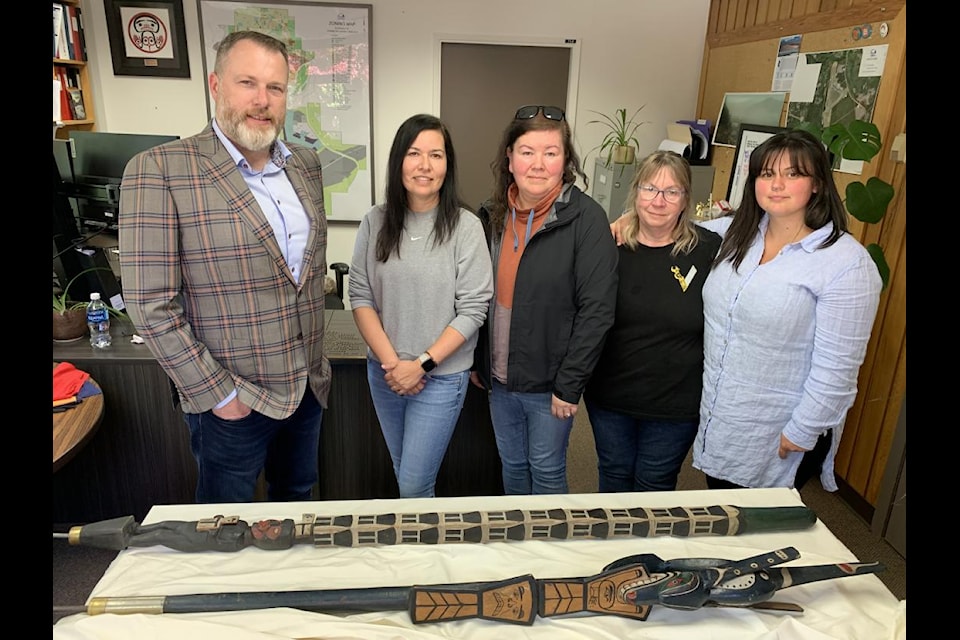The City of Terrace is planning to return two Indigenous talking sticks to the Dzawada̱ʼenux̱w First Nation of Kingcome Inlet. The talking sticks and been on display in the city council chambers since their donation in 1964.
The talking sticks were originally presented to the city by Skeena Forest Products Ltd. and Pohle Lumber Co. Ltd. The city began investigating their origins in 2016 following a suggestion by then-councillor Michael Prevost, who advocated for their return if found to have been acquired unjustly.
In early 2024, Indigenous artist Lou-ann Neel confirmed that the sticks are from the Dzawada̱ʼenux̱w First Nation. Neel worked with Marianne Nicolson, a historian, researcher, artist and a member of the First Nation, who identified the talking sticks based on photographs and confirmed their significance to the community.
On June 16, 2024, Nicolson and her sister Midori visited Terrace to view the sticks and discuss their return.
"What the sticks represent is highly significant to us. They represent rights and titles. They were created under our old traditions,” Nicolsan said after viewing the sticks for the first time in the Terrace city hall.
“The fact that they ended up in Terrace and are coming back to us is so special.”
Nicolson also spoke of a well-known photo from her village from 1938 of people of people standing in front of a totem pole they raised despite prohibitons against that practice. Someone in the photo is holding one of the two talking sticks.
The City of Terrace provided $1,500 so the First Nations representatives could visit Terrace and Nicolson also received a Canada Council for the Arts grant to assist with the costs.
Terrace mayor Sean Bujtas said returning the sticks, one topped with a killer whale head and the other adorned with coppers, represent part of the city's commitment to reconciliation.
“We are honoured to return these important cultural artifacts to their rightful home,” Bujtas said. "This story is leading to a happy ending."
How the Skeena Forest Products and Pohle Lumber Company acquired the two sticks may never be known, but their donation to the city coincided with the official opening of the city hall building in 1964.
That would seem to fit the wording on a plaque that was presented along with the talking sticks in 1964 as to the role of the city and of city council in acting for city residents.
Dated Aug. 1, 1964, the plaque indicates the items "were used in tribal councils by the ‘official speaker’ for a chief of a tribe to emphasize pertinent points in his speech, and generally denoted the clan and rank of the chief.”
Bujtas said the city is now working through the details of how the two sticks will be returned.
"They belong home and and that's where they need to go and we're going to get them there," he said.
The mayor credited former councillor Michael Prevost with first suggesting they be returned.
Current councillor Dave Gordon and Nakkita Trimble from the Freda Diesing School of Northwest Coast Art also drew a nod for helping to make connections.



